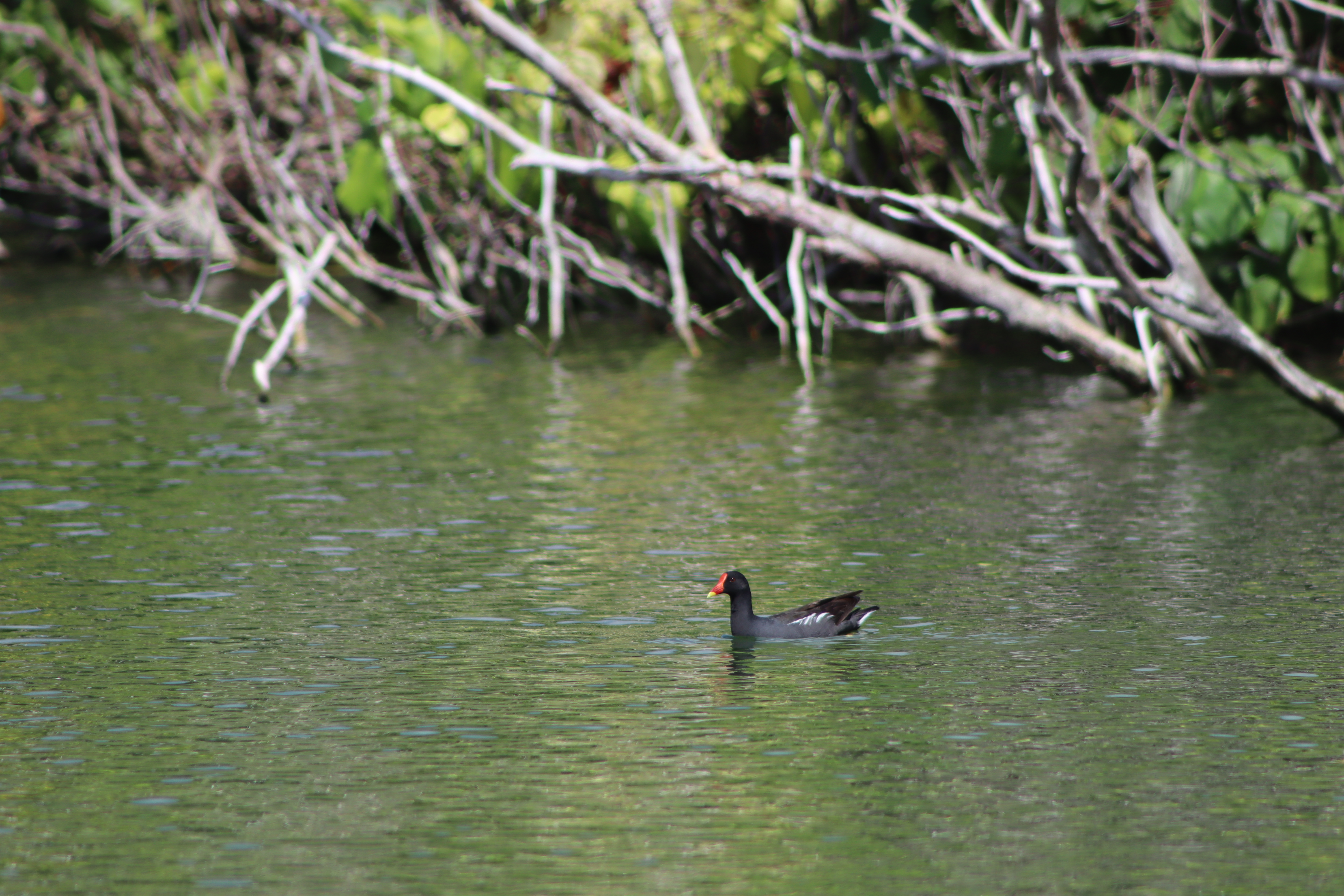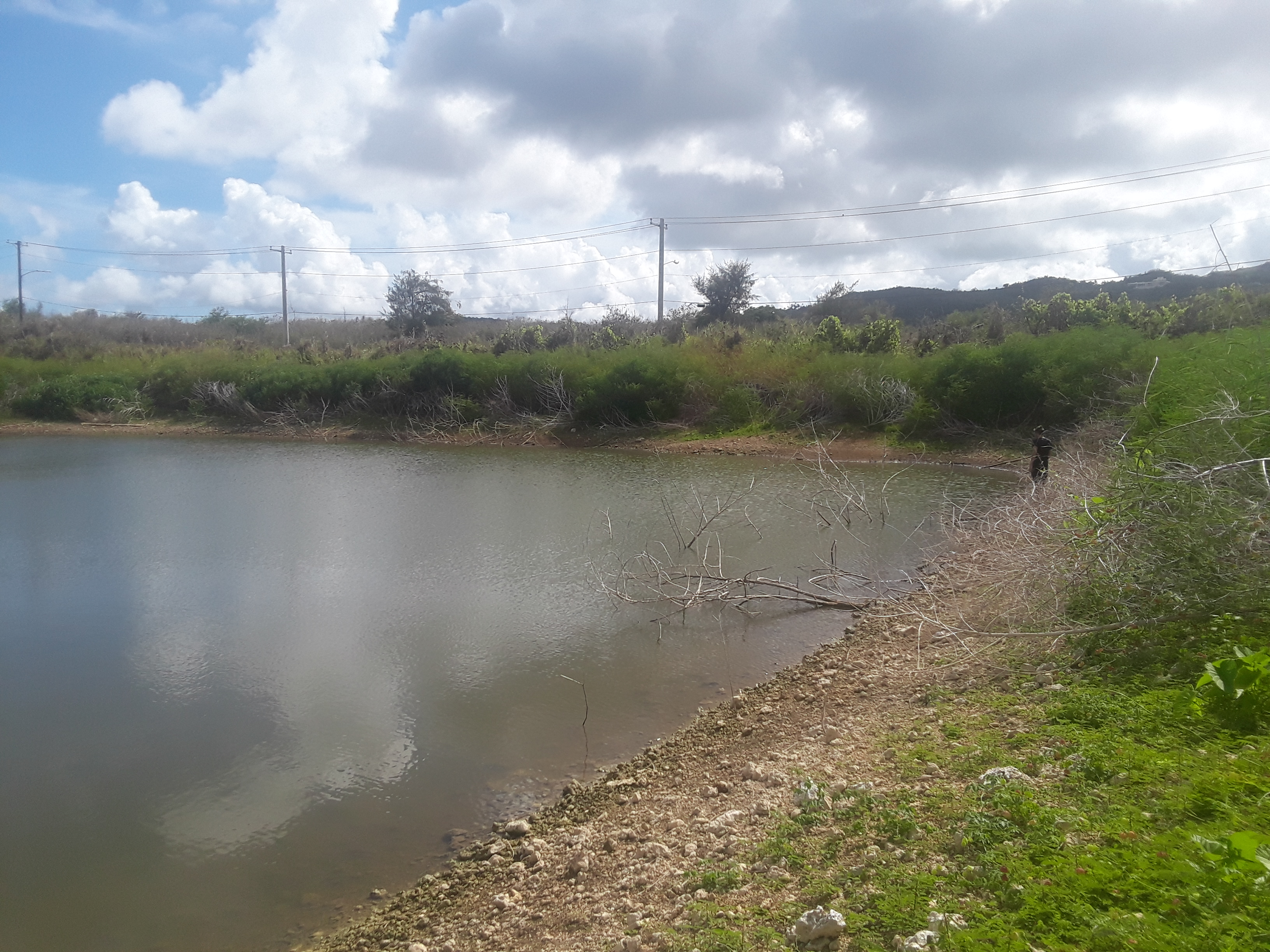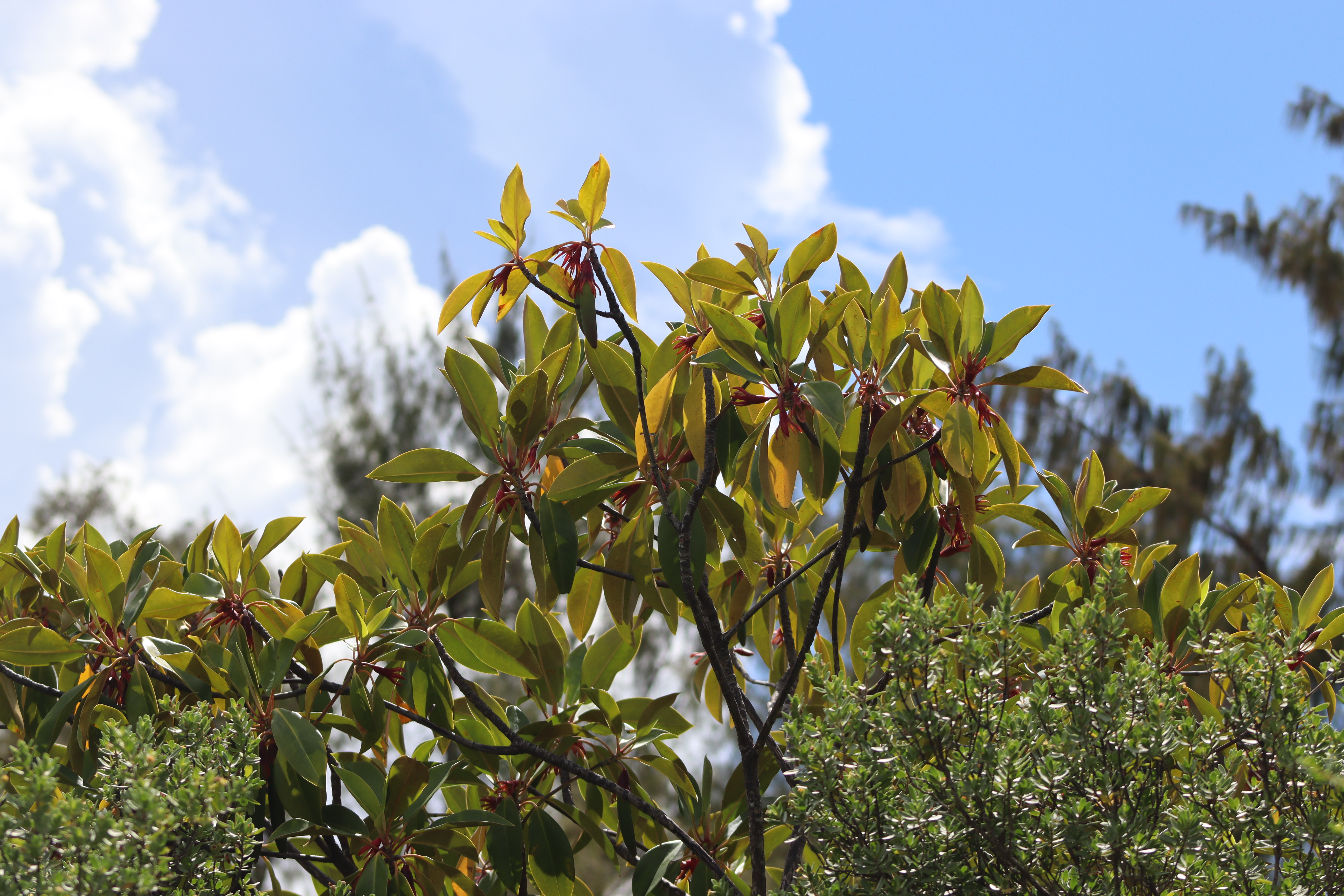Wetlands Management
Why Manage Wetlands?
The Northern Mariana Islands feature a variety of wetlands, including lakes, ponds, estuaries, marshes, swamps, streams, and mangroves. Saipan has the highest amount of wetland area with Lake Susupe as the largest lake in the CNMI. Other lakes include Lake Hagoi on Tinian and Laguna Sanhalom and Laguna Sanhiyon on Pagan. Perennial streams also occur on Saipan, such as the Talofofo Stream that feeds Jeffrey’s Beach Estuary. Rota boasts a series of intermittent freshwater streams within the Talakhaya watershed. Mangroves in Sadog Tasi and marshes in Chalan Kiya filter pollutants from upstream. Smaller wetlands, found in pockets, serve as helpful basins for aquifer recharge. Artificial wetlands found on golf courses provide important habitat for the endangered Mariana Common Moorhen.
Wetlands in the CNMI are priority coastal resources in need of effective management due to their limited range and valued ecological services. They control pollution and flooding, contain unique plant species, provide habitat for wildlife, and offer recreational and educational opportunities. In Saipan, Tinian, and Rota, wetland ecosystem services are valued at $10.7 million each year. From land to sea, wetlands also play a critical role in filtering pollutants that may reach coral reefs, an ecosystem service valued at nearly $5 million (Wolfs Company 2019). Thus, protection and enhancement of wetlands are important to the overall well-being of the coastal environment.
Unfortunately, wetlands remain threatened by development, pollution, and invasive species. Unpermitted fill of wetlands persists as an ongoing violation issue while development has the potential to encroach on wetland areas. Storm water runoff caused by high rainfall events make their way to wetland areas and reduce their water quality. MIHA and AMP wetlands are impacted by the invasive pond apple (Annona glabra) and Indian fleabane (Pluchea indica) which not only outcompetes native wetland species but also changes their hydrological functions. Thus, wetland regulation and management are crucial to preserving these areas and ecosystem services for the future.
Please refer to the DRAFT CZM 309 Assessment & Strategy Report: 2021-2025 to read on DCRM’s report of our wetlands: https://dcrm.gov.mp/wp-content/uploads/crm/CNMI_Section309v.5_06.12.20_DRAFT_Clean.pdf
Protecting Wetlands
Wetlands in the CNMI are regulated and managed by local and federal agencies with overlapping jurisdiction. Under DCRM, wetlands are considered “Areas of Particular Concern” (APC) which means that development and uses in these areas require additional environmental review to ensure that no significant impacts occur to CNMI’s coastal resources. Refer to the APC Map below to view the current Wetland APC Layer. Buffers are incorporated in the APC Layer to ensure that development does not further intrude on a wetland area and impact their hydrological and ecological functions. The CNMI follows a “No Net Loss” policy to minimize or prevent loss of wetland ecosystem services which DCRM leverages with the Mitigation Hierarchy.
Through its permitting mechanism, DCRM conditions all developments in wetland areas to preserve or enhance these systems. On-going work in all sections of DCRM aims to improve regulations and enforcement in wetland management. One such effort is to integrate the Economic Valuation Study of CNMI Inland Wetlands into the DCRM permitting process.
Click here to view the Interactive APC Map: https://dcrm.maps.arcgis.com/apps/webappviewer/index.html?id=5b47ed37bf2340e282b0a0944f96a475. Wetland APCs are indicated in green
Notable Work In-Progress
Currently, DCRM summer interns under the Coral Reef Initiative are evaluating wetlands on Saipan using the Rapid Assessment Methodology (RAM). They are capturing the current state of individual wetlands and their impairment. They have detected wetlands not counted in the current Wetland APC Layer, which has been heavily used for planning and permitting decisions. Their work will build on to the Wetland APC Layer update and contribute baseline data for future wetland monitoring.
DCRM will also be collaborating closely with the National Fish & Wildlife Foundation (NFWF) Coastal Community Resilience Initiative for Wetlands and Corals in Saipan’s Priority Management Watershed Project spearheaded by the Office of Planning and Development (OPD). Restoration work consists of invasive species control and cultivation of mangrove species of wetlands in the West Takpochao watershed.
For the next five years, under the NOAA’s Coastal Zone Enhancement Program (309), DCRM will focus on wetland training and delineation to improve the Wetland APC Layer.
Helpful Resources:
Wetland Plants Identification Guide (2018) : https://dcrm.gov.mp/wp-content/uploads/crm/CNMI-Wetland-Plants-Identification-Guide-Final_reduced.pdf
Economic Valuation Study of CNMI Inland Wetlands (2019): https://dcrm.gov.mp/wp-content/uploads/crm/Report_Wetlands-ESV_CNMI_Wolfs-Company_FINAL-DRAFT_v3.0_reduced_size.pdf
Wetlands, Streams, and Mangroves Publications Page: https://dcrm.gov.mp/resources-publications/wetlands-streams-and-mangroves-publications/



